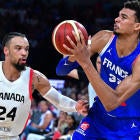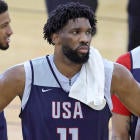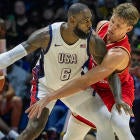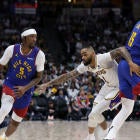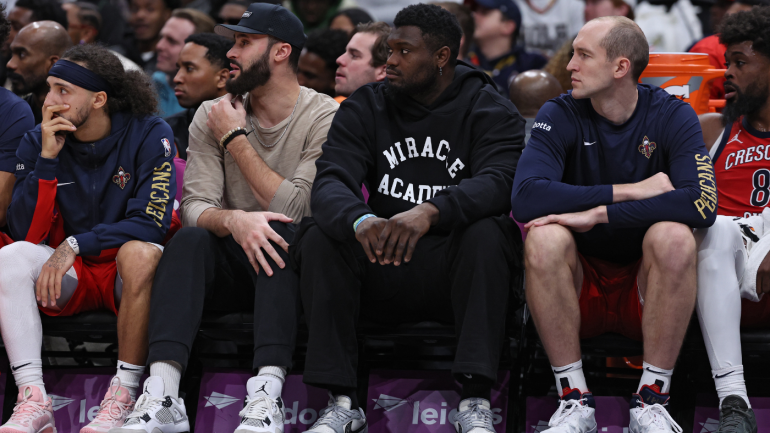
This week, the NBA sent teams and media a 57-page report about load management. The primary finding: Based on 10 years of data from regular-season games, it is not clear that resting players makes them less susceptible to injury. In bold type on the fifth page, under the heading "Executive Summary," the report reads: "Results from these analyses do not suggest that missing games for rest or load management - or having longer breaks between game participation - reduces future in-season injury risk."
On page 42, under the heading "Summary," the report further states that the data did not show an association between missing games for rest or load management and lower injury risk, "either in the regular season or playoffs, even after accounting for age, injury history, and minutes played," and that "there was no observed increase in injuries during or immediately following periods with a dense game schedule or in second games of back-to-back series, even after accounting for age, injury history, and minutes played."
This is what NBA commissioner Adam Silver has been alluding to for months. In September, when the league's board of governors approved a stricter Player Participation Policy, Silver told reporters that "the science is inconclusive" about player rest. In December, Silver told reporters at the In-Season Tournament that "we have no solid data that that is effective" at preventing injuries.
But it's also notable what this report didn't say.
The conclusion -- and the league's stance -- is not that resting players doesn't reduce injuries, exactly. It's that this data does not prove that it does. On Thursday, the NBA hosted a video call with its medical personnel and epidemiologists from IQVIA, the company that produced the report, and they chose their words deliberately.
"We want to be careful not to overstate the finding here," David Weiss, the league's senior vice president of player matters, said, according to The Athletic. "This doesn't prove that load management doesn't work, but it really calls into question the conventional wisdom that it does, to reduce injuries. That's sort of why we wanted to put it on the table."
"We're not saying it's better or worse," Dr. Christina Mack, an epidemiologist and IQVIA's chief scientific officer, said, according to ESPN.
The report notes several limitations of the study, including that it was not feasible to investigate "longer-term impacts of games missed for rest or load management on, for example, career length," and that there "may be beneficial effects of missing games for rest or load management on risk mitigation in certain subsets of players that could not be investigated in this report (e.g., due to small sample size) and for non-injury-related reasons, such as to improve performance." Neither Silver, nor Joe Dumars, the league's vice president of basketball operations, who has delivered similar messages publicly, has denied a link between player rest and performance.
Looking at "just one aspect of load management" -- missing a game -- means that the report "doesn't take into account all the other aspects of load management that might be going on that we can't measure currently," Dr. John DiFiori, the NBA's director of sports medicine, said, according to The Athletic.
"We don't have data, consistent data, across teams, across the league, on what they do on other days that they're not playing -- other training and conditioning aspects," DiFiori said. "So all of that's part of load management. This is specifically looking at whether missing a game makes a difference. This is not the final determinant study, but it's pretty good data for the world of basketball that shows we need to do some more work here to understand it."
The NBA may no longer accept the premise that rest leads to injury reduction, but its teams have invested in sports science along with medical and training staffs who are tasked with keeping their players healthy. Those staff members are often the ones who suggest that players need to rest. In 2015, CBS Sports published a story by Ken Berger about teams like the Golden State Warriors using wearable technology, data from in-arena cameras and daily questionnaires to guide their decision-making and to, ideally, prevent injuries. After a six-games-in-nine-days road trip, there were numerous red flags, Keke Lyles, then the Warriors' director of athletic performance, told Berger, adding, "A lot of non-contact injuries are fatigue-related." They didn't want to sit four of their best players in their next game, Golden State executive Kirk Lacob told Berger -- coach Steve Kerr decided to write an email to fans laying out the reasoning -- but the data told the team that it was the right thing to do.
"We found that we had multiple guys red-lining," Lacob said then. "It was an easy decision. Steve actually said, if one of those guys got hurt and he hadn't sat them out knowing that information, he could never forgive himself."
In 2017, after the Warriors and the Cleveland Cavaliers sat stars during nationally televised games on consecutive Saturdays -- and Silver sent out a memo to the board of governors describing it as "an extremely significant issue" that could "damage the perception of our game" -- San Antonio Spurs coach Gregg Popovich said he understood Silver's position, but that his organization's approach, which included limiting its veterans' minutes and holding them out of certain games, had been successful. Tim Duncan, for example, started playoff games at the age of 40.
"We have definitely added years to people," Popovich said, per the Associated Press. "So it's a trade-off. You want to see this guy in this one game? Or do you want to see him for three more years in his career? And do you want to see him in the playoffs because he didn't get hurt because maybe he got rest and he was playing so much."
Today, the NBA's stance is that this trade-off represents conventional wisdom, but it is not observable in the data. By not exactly saying the trade-off doesn't exist, though, it's walking a tightrope. Technically speaking, the league is not saying its teams are wrong for making decisions based on the idea that rest can mitigate injury risk. Those are individual decisions, and the league's data only suggests that, on the whole, those decisions have not reduced injuries.
The reality is that it's impossible to know how many players might have gotten hurt had they played every time they rested. And it's fair to ask how involved the league should be in determining who a team puts on the court. When a sports scientist on a team payroll is considering how risky it is for a particular player to play in a particular game, the overall efficacy of load management as it pertains to injury prevention leaguewide is irrelevant. This is the data that supports the Player Participation Policy, though, and the policy is affecting these (often difficult) choices. If a heavy-minutes star suffers a serious injury on the second night of a back-to-back that he would have skipped last season, there is no research that will make the policy look less like an overstep.










